Having an Ambulatory EEG Test (photo description)
This leaflet explains what you need to know about having an ambulatory EEG test.

Before you come
- Wash and dry your hair
- Do not wear a top with a tight neck, something that buttons up is better.
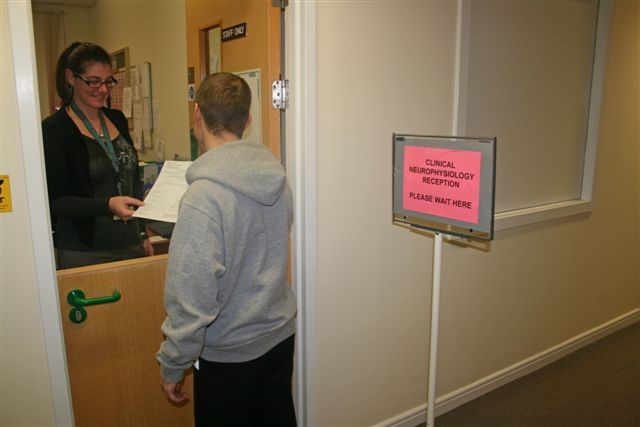
Coming to the department
When you arrive, we will check you in.
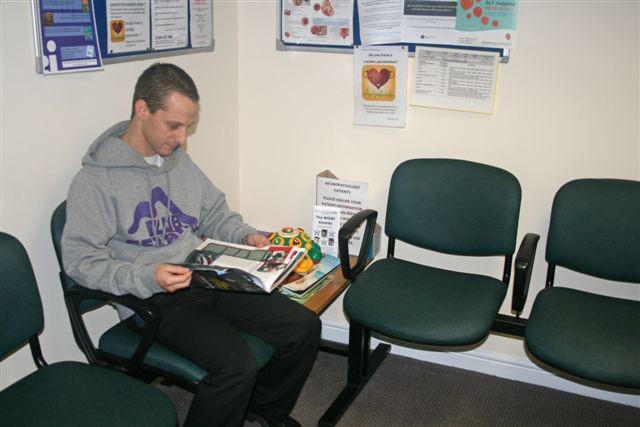
You will sit and wait a short while.
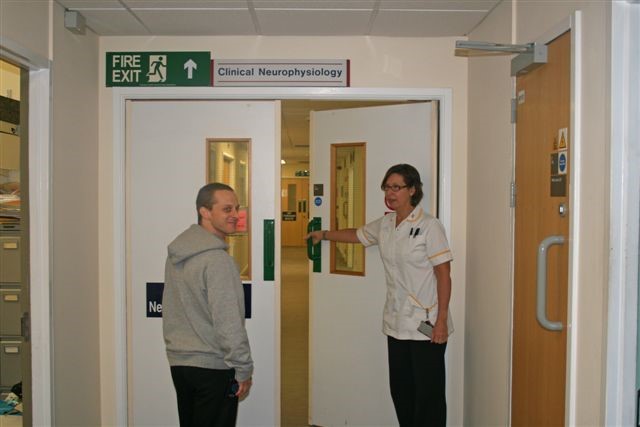
Then you can come in for your Ambulatory EEG.
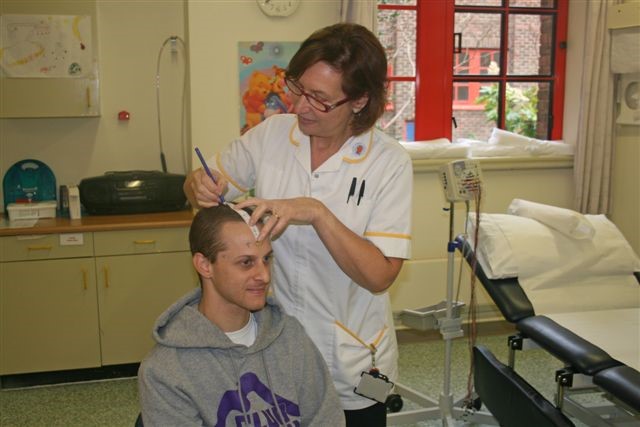
We will talk to your about your symptoms. Then we will measure your head and mark it with a pencil.
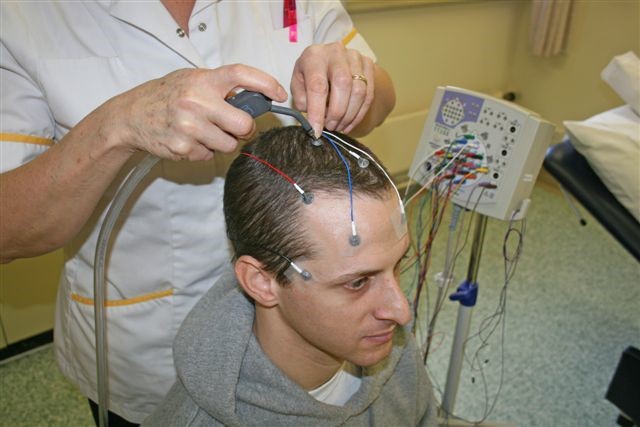
We will put 23 little wires on your head with cream and glue and two on your shoulders. A puffer dries the glue quickly.
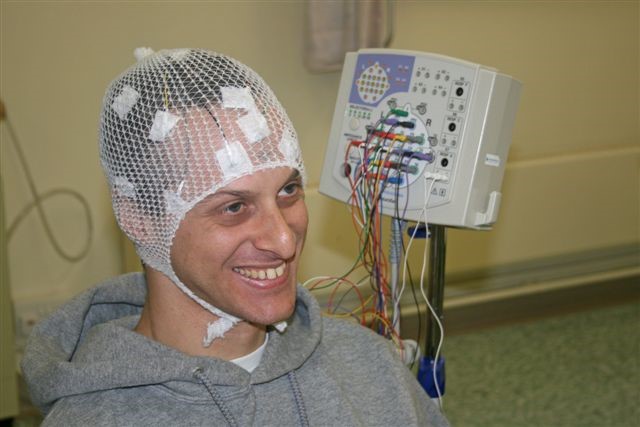
Sometimes we put a net hat over the wires to stop them falling off. Try not to touch them.
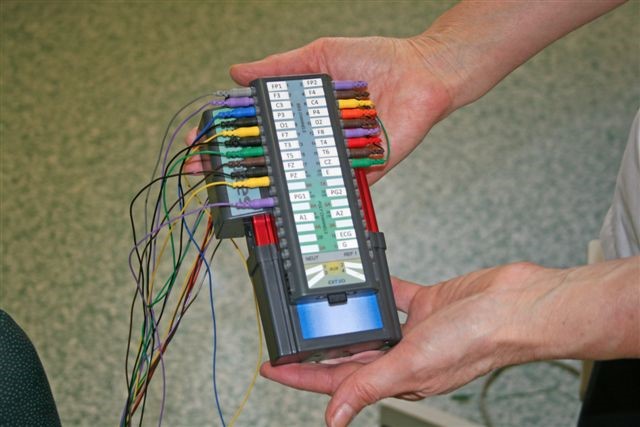
The wires are plugged into an EEG box that records your brain waves.
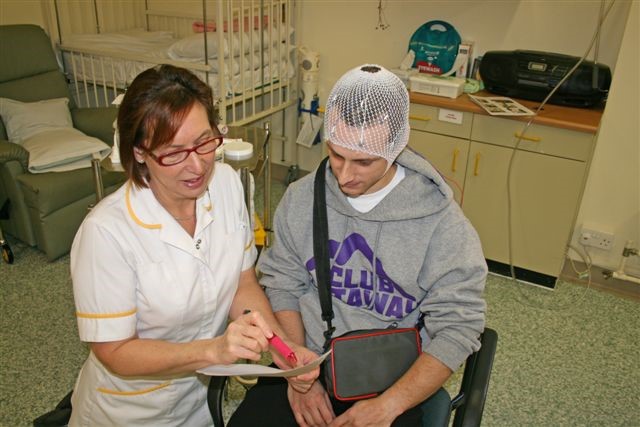
The box fits in a shoulder bag. It can record your brain waves all the time. We give you a diary to write down what you are doing at home.
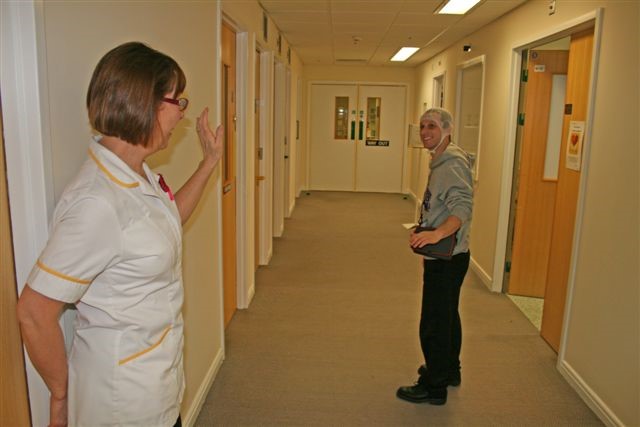
We will show you how to look after the box when your go to bed at night. Then you can go home.
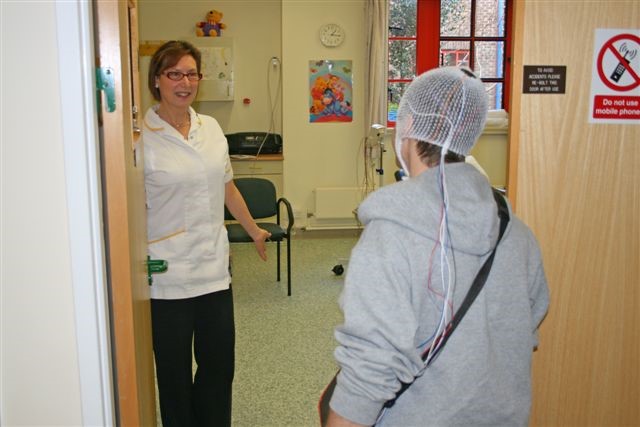
When you come back the next day, we will see if the wires can be taken off. Sometimes they need to stay on for a second night.
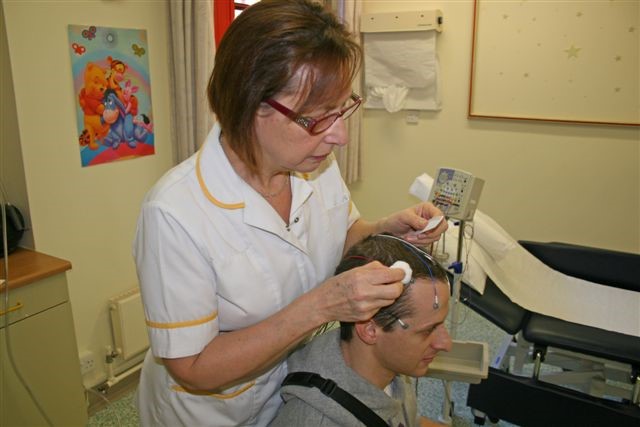
Then we will take the wires off. We use a special liquid to take the glue off. Try not to get it on your fingers.
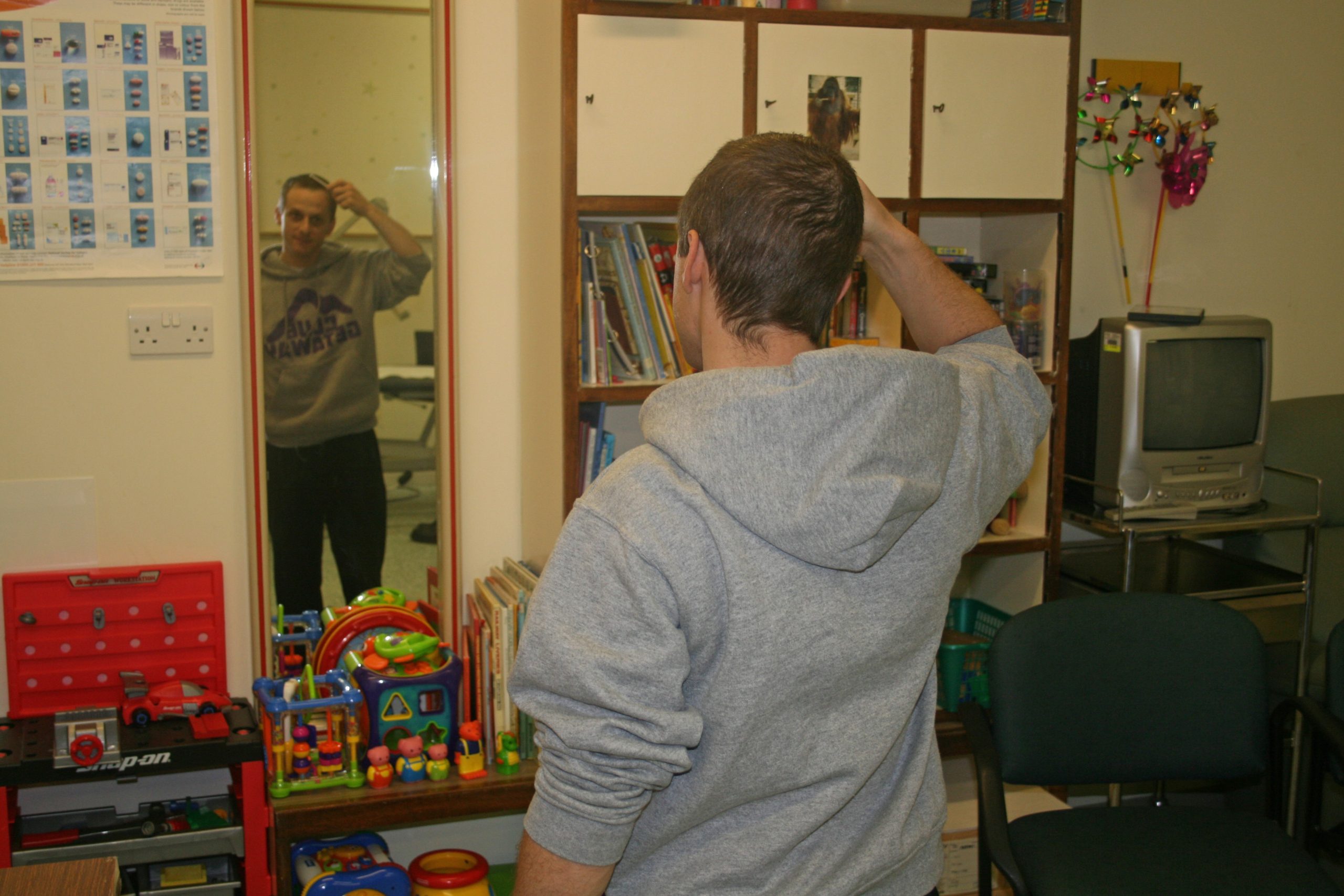
When the wires are off you can tidy your hair.
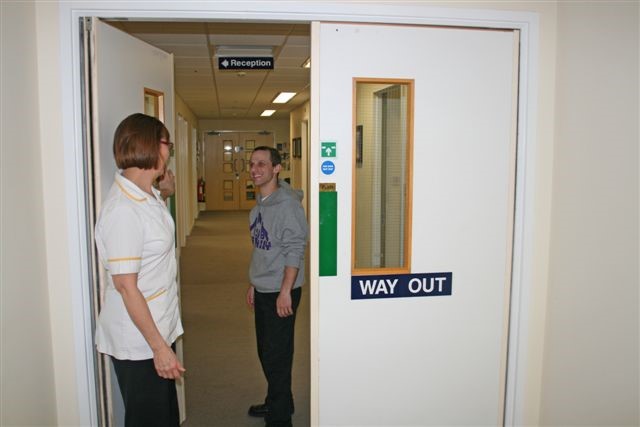
The it is time to go home. Remember to wash your hair as soon as you get home.
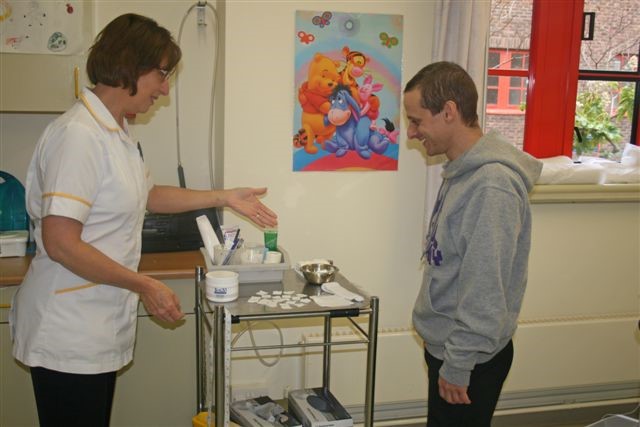
Things we can do to help you feel relaxed
- We explain everything to you
- We show you what is going to happen
- We give you plenty of time.
If you are worried about your appointment:
- Visit – arrange to look around before your appointment
- Support – bring someone your trust
- Ask – ask us questions about your test
- Tell us – if you are worried about your test, let us know.

About this leaflet
Author: Monica Freeman
Written: June 2014
Approved: June 2014
Review date: June 2018
Edition: v1
If you have feedback regarding the accuracy of the information contained in this leaflet, or if you would like a list of references used to develop this leaflet, please email patientinformation.leaflets@dchft.nhs.uk
